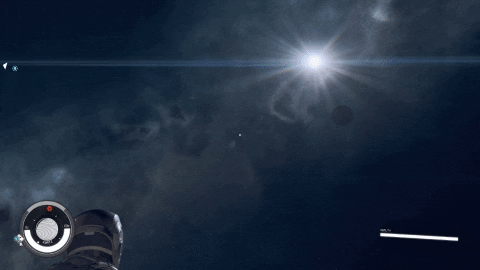AMD says it's aware of Starfield's Ain't No Sunshine bug but currently has no timeline for a fix
But is also keen to point out that older GeForce GPUs, from at least the GTX 10-series down, are also suffering.

Update, September 12, 2023: An AMD representative has been in touch to assure us that it is aware of the bug, but unfortunately doesn't have any update about whether we might see a patch incoming, or even whether the driver team has a fix in mind.
What they did also note was that it is reportedly not just AMD RX 6000 and RX 7000-series cards that are having the no-sun issue, as reportedly cards older than the RTX 20-series are also anecdotally suffering from the same problem.
I have not been able to confirm this myself, but some readers have suggested that their GTX 1080 Ti and GTX 980 are feeling the Bill Withers Ain't No Sunshine vibe, too. Those are older cards, to be fair, but were also the top GPUs of their generations and I would bet there are still a fair few in service out there.
It's going to be interesting to see what the issue at play is here, because it seems that older AMD cards, such as the venerable RX 5700 XT, are doing fine (in relative terms, performance won't be great) while Nvidia's older GPUs are suffering. But the inverse is true for newer graphics cards.
Original story, September 11, 2023: If you're playing Starfield on an AMD graphics card, there's a good chance you've missed one of the most glaring bugs in the game, because you just won't have seen anything. The AMD-sponsored Bethesda game simply doesn't render a local star from any planet without an atmosphere on an AMD card.
And yet the stars will blaze away until the end of time on an Nvidia GPU.
We're growing used to weird graphical bugs in modern PC games—whether it's a case of too much eyebrow, or no eyebrows at all—but stars not shining in a game largely sold on space exploration, peculiarly on its sponsor's cards, well, that's downright bizarre.
Comic deals, prizes and latest news
Sign up to get the best content of the week, and great gaming deals, as picked by the editors.
It was highlighted in a recent reddit post, titled 'Dear AMD Card User' and explained the bug in simple terms on a Radeon RX 7900 XT. I've replicated the issue today, booting up the game on an RTX 4080 and on an RX 6950 XT. There's a shining orb in the heavens on one and nothing but empty space on the other.
The reddit post goes on to suggest that it's the same issue on planets with an atmosphere, where the game doesn't actually render a sun, just a vague bright spot in the sky. But that just seems to be how Starfield is actually doing that planetside, as I've seen the same thing on both AMD and Nvidia cards on any rock, whether it's just got a light atmosphere or a full class M atmosphere.





Best CPU for gaming: The top chips from Intel and AMD.
Best gaming motherboard: The right boards.
Best graphics card: Your perfect pixel-pusher awaits.
Best SSD for gaming: Get into the game ahead of the rest.
Why this is happening, I can't tell you. I've reached out to AMD and it's going to see if its GPU folk are aware of the issue and whether they might have a fix incoming. But as of right now, there is no mention of the bug in the known issues of the latest AMD drivers' release notes.
Interestingly, despite ostensibly running on an AMD GPU, there is no suggestion that the Xbox version is having the same problem, as it looks like the game is rendering local stars on barren rocks without issue.
It's not a game-breaking bug by any stretch, and is one of those things that probably wouldn't annoy you until someone pointed it out (so, yeah, sorry about that), but it's still an oddity for a game that has supposedly had "AMD engineers in our codebase" as Todd Howard assured us.
If it was a PC-specific issue, that also wouldn't be that strange—a Bethesda PC port not having issues would be truly unprecedented—but the fact that it's only on a certain vendor's GPUs is, especially when that vendor was involved in the game prior to its launch.
Hopefully there's a hotfix on the way soon, and the sun will once again shine on the Radeon faithful.

Dave has been gaming since the days of Zaxxon and Lady Bug on the Colecovision, and code books for the Commodore Vic 20 (Death Race 2000!). He built his first gaming PC at the tender age of 16, and finally finished bug-fixing the Cyrix-based system around a year later. When he dropped it out of the window. He first started writing for Official PlayStation Magazine and Xbox World many decades ago, then moved onto PC Format full-time, then PC Gamer, TechRadar, and T3 among others. Now he's back, writing about the nightmarish graphics card market, CPUs with more cores than sense, gaming laptops hotter than the sun, and SSDs more capacious than a Cybertruck.
Most Popular



